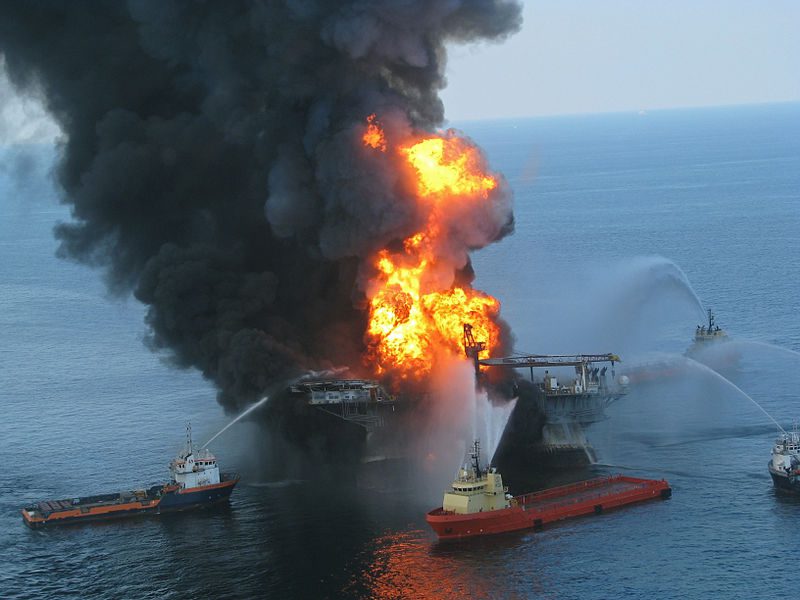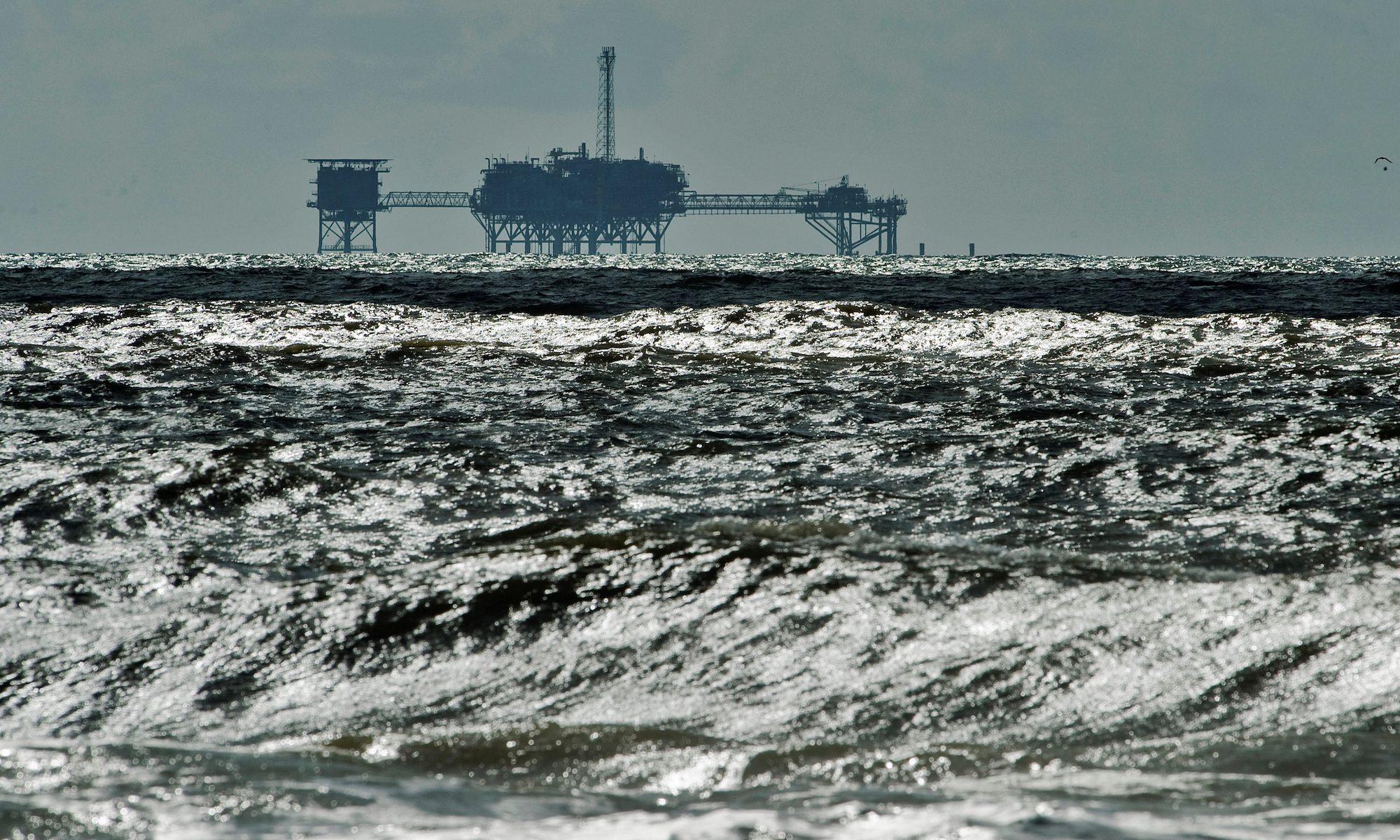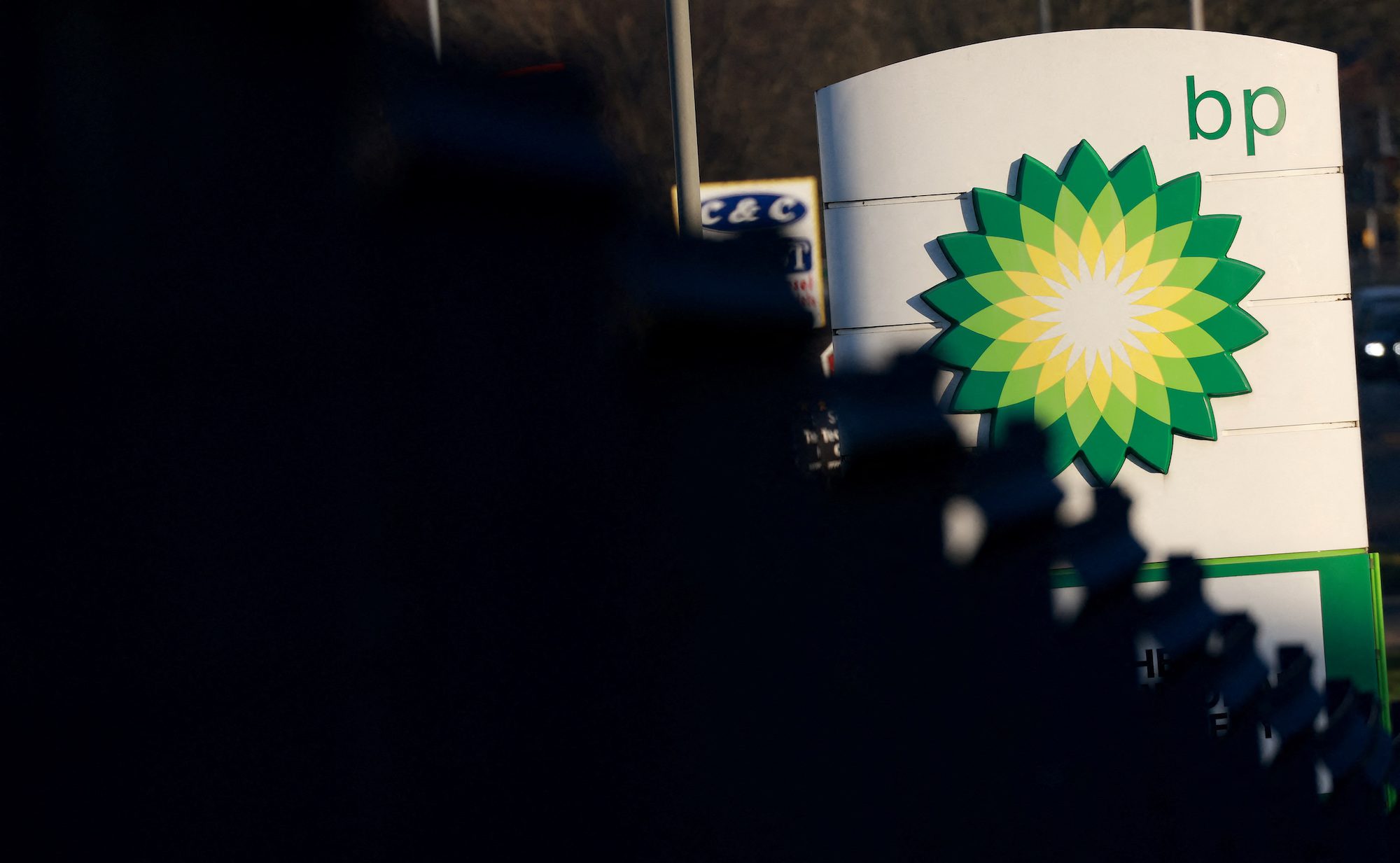Deepwater Horizon in flames on April 21, 2010 after the explosion.
(Bloomberg) — Two BP Plc well-site managers and a former executive pleaded not guilty to criminal charges growing out of the 2010 Gulf of Mexico oil spill appeared in court to enter pleas.
Robert Kaluza, Donald Vidrine and David Rainey appeared today before U.S. District Judge Ivan L.R. Lemelle in New Orleans. Lawyers for the three men said Nov. 15 that their clients are not guilty.
The site managers, Kaluza and Vidrine, who supervised testing on the Macondo oil well were charged Nov. 15 with involuntary manslaughter, seaman’s manslaughter and Clean Water Act Violations. The U.S. alleges that Kaluza and Vidrine ignored multiple indications that the well wasn’t secure before the explosion that killed 11 aboard the drilling rig.
Rainey, the company’s former vice president of exploration for the Gulf of Mexico, was charged with obstruction of Congress and false statements related to the size of the spill. The U.S. claims Rainey cherry-picked information from flow-rate reports to make the oil spill seem less catastrophic than it was.
Company’s Plea
BP agreed to plead guilty to 14 counts and pay $4 billion to resolve all criminal claims against the company arising from the 2010 incident. The company has also agreed to pay an additional $525 million to resolve claims by the Securities and Exchange Commission that the London-based company underestimated the size of the spill to bolster stock prices.
The 14 criminal counts include 11 for felony manslaughter, one felony count of obstruction of Congress, one misdemeanor count under the Clean Water Act and one misdemeanor count under the Migratory Bird Treaty Act, according to the Justice Department.
Thirteen of the 14 criminal charges against BP are related to the accident itself and are based on negligent misinterpretation of the negative pressure test conducted on board the Deepwater Horizon, BP said in a Nov. 15 press release.
Obstruction Charge
The obstruction count involves BP’s communications on flow rate estimates to a congressional subcommittee, the Justice Department said in a court filing.
The allegations against Vidrine and Kaluza are connected to a process called negative testing which monitors the well for any increase in pressure or flow of oil or gas up the well. Any pressure increase or fluid flow is an indication that the well isn’t secure and that oil and natural gas may be entering the well, the U.S. said in court papers.
During the negative testing on April 20, pressure on a drill pipe being monitored “quickly built up significantly above expected values,” the U.S. said.
“Each time the pressure was bled off of the valve connected to the drill pipe, the pressure again built unexpectedly. Abnormal fluid flow also occurred,” the government said.
These were “significant indications that the well was not secure,” the U.S. said. Kaluza and Vidrine “failed to phone engineers onshore at that time to alert them to the problems,” according to prosecutors. They later allegedly decided to begin monitoring negative testing on an additional pipe, called a kill line, which also showed “continued, abnormal, high pressure.”
Rising Oil
The defendants “deemed the negative testing a success based on observations of the kill line,” the U.S. said. “As a result the rig crew began to remove thousands of feet of heavy drilling mud in the river and to replace it with lighter-weight seawater, inviting natural gas and oil to migrate up through the riser and onto the rig floor.”
Later that evening, “natural gas, oil and mud blew out of the Macondo well at tremendous pressure,” according to the government. The gas ignited and caused the explosion that killed the 11 men on board the rig.
The allegations against Rainey involve public estimates that BP made of the size of the spill in the first weeks after the rig exploded.
The Unified Command, the joint BP and government response to the incident, initially estimated oil was spilling into the gulf at a rate of 1,000 barrels per day.
NOAA Estimate
The National Oceanic and Atmospheric Administration prepared a written flow-rate estimate days later saying that about 5,000 barrels of oil a day was being released. NOAA said the estimate was preliminary, based on oil that had started to float to the surface of the Gulf, and “the actual flow amount could exceed 5,000 BOPD by ten times,” the U.S. said.
BP officials told Congress in May 2010 that the company’s “best guess” estimate of the spill flow rate was about 5,000 barrels a day, even though some of its own scientists had suggested much more oil was flowing into the Gulf, according to the Justice Department.
“Rainey was the primary source of flow-rate information” for BP’s May 24, 2010, response to Congress seeking a current estimate, the U.S. said.
Prosecutors allege that Rainey, who worked on preparing BP’s spill volume projections, used NOAA’s “preliminary and heavily qualified” estimate to support the company’s “best guess” figure.
Test Methods
“Rainey performed and caused to be performed his own daily estimates, purportedly using” the American Society for Testing and Materials and the European, or Bonn, methods, the U.S. said.
Rainey’s Bonn calculations resulted in figures higher than 5,000 barrels per day, with a high end rate estimate up to 92,000 BOPD, the U.S. said in the indictment. “Rainey withheld his Bonn estimates from individuals working on flow rate within the Unified Command and, later, also withheld them from Congress.”
His ASTM estimates didn’t conform with standards “but were instead manipulated to consistently arrive at or near a ‘best guess’ of between 5,000 and 6,000 BOPD,” the U.S. said.
“BP did not rely internally on defendant Rainey’s contrived and inaccurate flow-rate numbers,” the U.S. said in the indictment. Within days of the explosion, Rainey had received estimates from BP subsurface engineers that that estimated flow rates ranging from 64,000 to 146,000 barrels of oil per day, the U.S. said.
Barrel Count
In August 2010, the Flow Rate Technical Group of the Unified Command announced that the rate after the blowout had initially been 62,000 barrels a day, the U.S. said. It was about 53,000 by mid July 2010 when the well was shut in, the U.S. said. By then, about 4.9 million barrels of oil had been released into the Gulf of Mexico, the U.S. said, citing the technical group figures.
The blowout and explosion aboard the Deepwater Horizon drilling rig in April 2010 killed 11 workers and started millions of barrels of crude leaking into the gulf. The accident prompted hundreds of lawsuits against BP; Transocean Ltd., the Vernier, Switzerland-based owner and operator of the rig; and Houston-based Halliburton Co., which provided cementing services.
U.S. Lawsuit
The Justice Department sued BP in December 2010, alleging the company failed to prevent or contain the spill and seeking fines for each barrel of oil discharged.
The department’s lawsuit hasn’t been settled and BP remains at risk for as much as $17.6 billion in potential fines from alleged violations of the Clean Water Act and demands by the U.S. and Gulf states for enough money to restore the region’s coastline and waters to their condition before the spill.
U.S. District Judge Carl Barbier in New Orleans, who is overseeing much of the spill litigation, has set Feb. 25 for a nonjury trial to apportion fault and decide whether BP is liable for gross negligence.
BP reached a settlement with most non-government plaintiffs in March, agreeing to pay an estimated $7.8 billion. That settlement postponed the first trial date to determine liability for the disaster. Barbier is considering whether to approve the settlement.
The criminal cases against the individuals are U.S. v. Kaluza, 12-cr-00265; and U.S. v. Rainey, 12-cr-00291, U.S. District Court, Eastern District of Louisiana (New Orleans).
The criminal case against BP is U.S. v. BP Exploration and Production Inc., 12-00292, U.S. District Court, Eastern District of Louisiana (New Orleans).
The government civil case is U.S. v. BP Exploration & Production Inc., 2:10-cv-04536, U.S. District Court, Eastern District of Louisiana (New Orleans). The lawsuit is part of In Re OilSpill by the Oil Rig Deepwater Horizon in the Gulf of Mexico on April 20, 2010, MDL-2179, U.S. District Court, Eastern District of Louisiana (New Orleans).
-By Margaret Cronin Fisk and Allen Johnson Jr. Copyright 2012 Bloomberg.
Unlock Exclusive Insights Today!
Join the gCaptain Club for curated content, insider opinions, and vibrant community discussions.

 Join The Club
Join The Club













